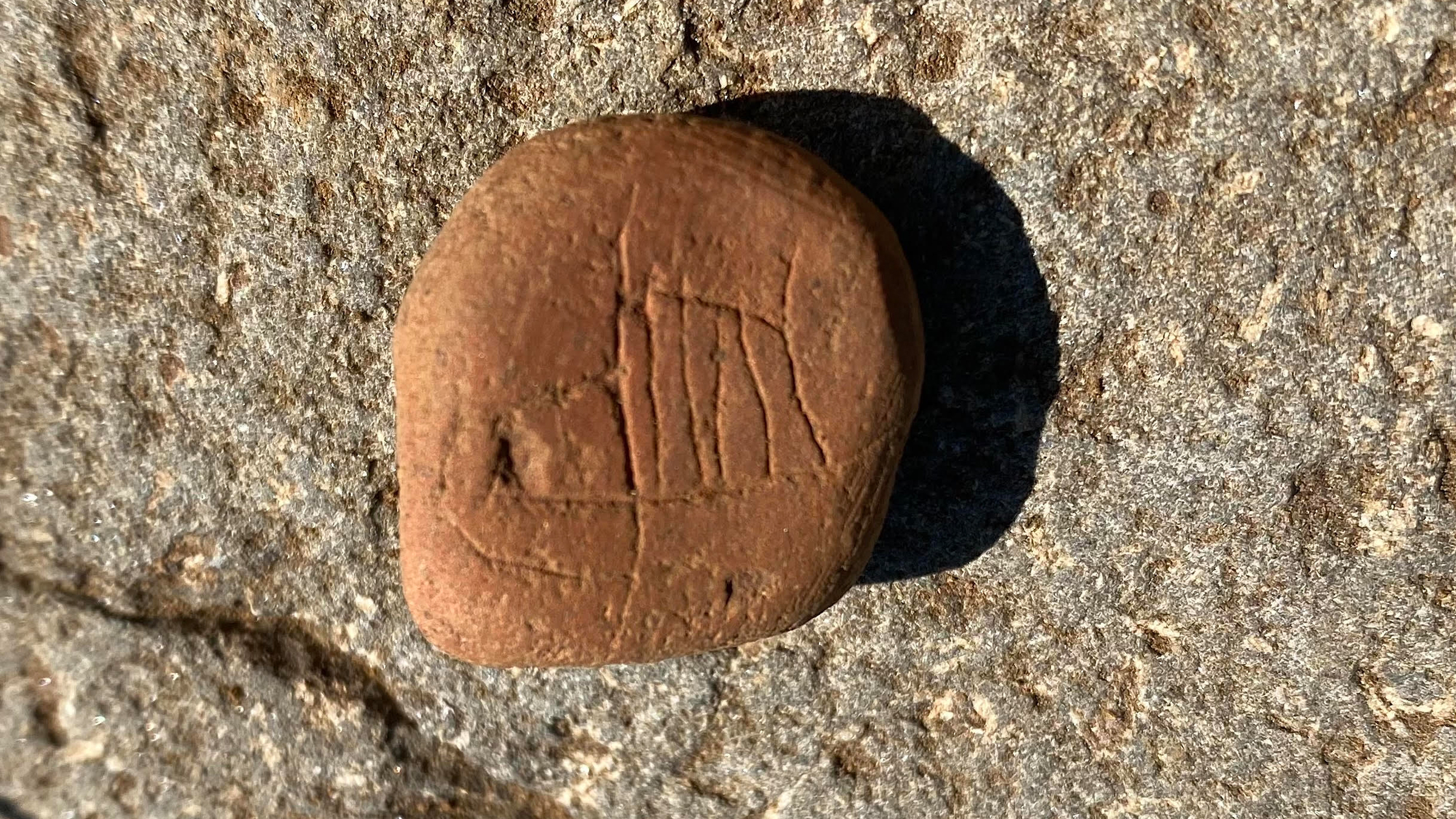
Archaeologists in Iceland have unearthed the country's oldest known drawing: a scratched-out piece of "Viking graffiti" that looks like a partly drawn boat.
The researchers found the graffiti in the remains of a longhouse, said Bjarni F. Einarsson, an archaeologist and manager at his private company Fornleifafræðistofan (The Archaeological Office) and the project's excavation leader. The scribble was engraved on a 1-inch-wide (2.5 centimeters) reddish clay stone and dates to shortly after A.D. 800.
The ship isn't complete, which is typical of Viking boat graffiti, Einarsson said. But the carving shows a sail with vertical lines, a rope from the sail to the front of the ship and a partly drawn hull. "It's very common that the ships are not drawn [fully] in their hull," Einarsson told Live Science.
Viking Age ship graffiti — both depictions of lone boats and carvings of fleets — are common in Scandinavia and are often found on fragments of bone, stone and timber, he noted. "We don't know why people were carving those ships on all kinds of material," Einarsson said. But "they are extremely poorly done. They are no masterpieces."
Related: 1,100-year-old 'ceremonial' Viking shields were actually used in battle, study suggests
The clay stone is just one of many artifacts discovered in the longhouse, which Einarsson uncovered in Stöð, east Iceland, in 2007 while doing an archaeological survey for a company that planned to lay down fiber-optic cable in the area. Thanks to local support and funding, he returned in 2015 to excavate the archaeological site and has returned there every year since.
Radiocarbon and tephra (volcanic ash) dating revealed the Vikings lived in and rebuilt the hall across three phases: before A.D. 800, shortly after 800 and, finally, in the second half of the 800s. These dates match known Viking arrival dates in Iceland; the 12th-century "Book of Settlement," which describes Iceland's early settlement days, states that Viking Age explorers came in the 870s. Archaeological evidence shows that people arrived before then, but the actual date of the first arrival is unknown, Einarsson said.
Artifacts unearthed from the latter half of the ninth century include lead weights, hack silver (a form of currency) and traces of gold, suggesting that the Vikings who lived there were traders.
"This length, combined with the artifacts — silver, lead and gold and an extremely high amount of beads" — indicates that a chieftain lived in the hall, which Einarsson called "the richest hall" from the Viking Age of Iceland. This chieftain probably shared the longhouse with many people, including "families and people of all classes, even slaves," he said.
Einarsson found the ship graffiti while excavating a wall from the middle settlement phase, when the hall was about 141 feet (43 m) long. There are a few contenders for the second-youngest carving in the country, but one shows an engraving of a walrus face from a Viking Age farm in western Iceland that dates to the 10th century, he said.
Put another way, Vikings were carving all kinds of images wherever they went. Other Viking Age graffiti includes geometrical patterns, runic graffiti with obscure text and even pornographic text, Einarsson said.







